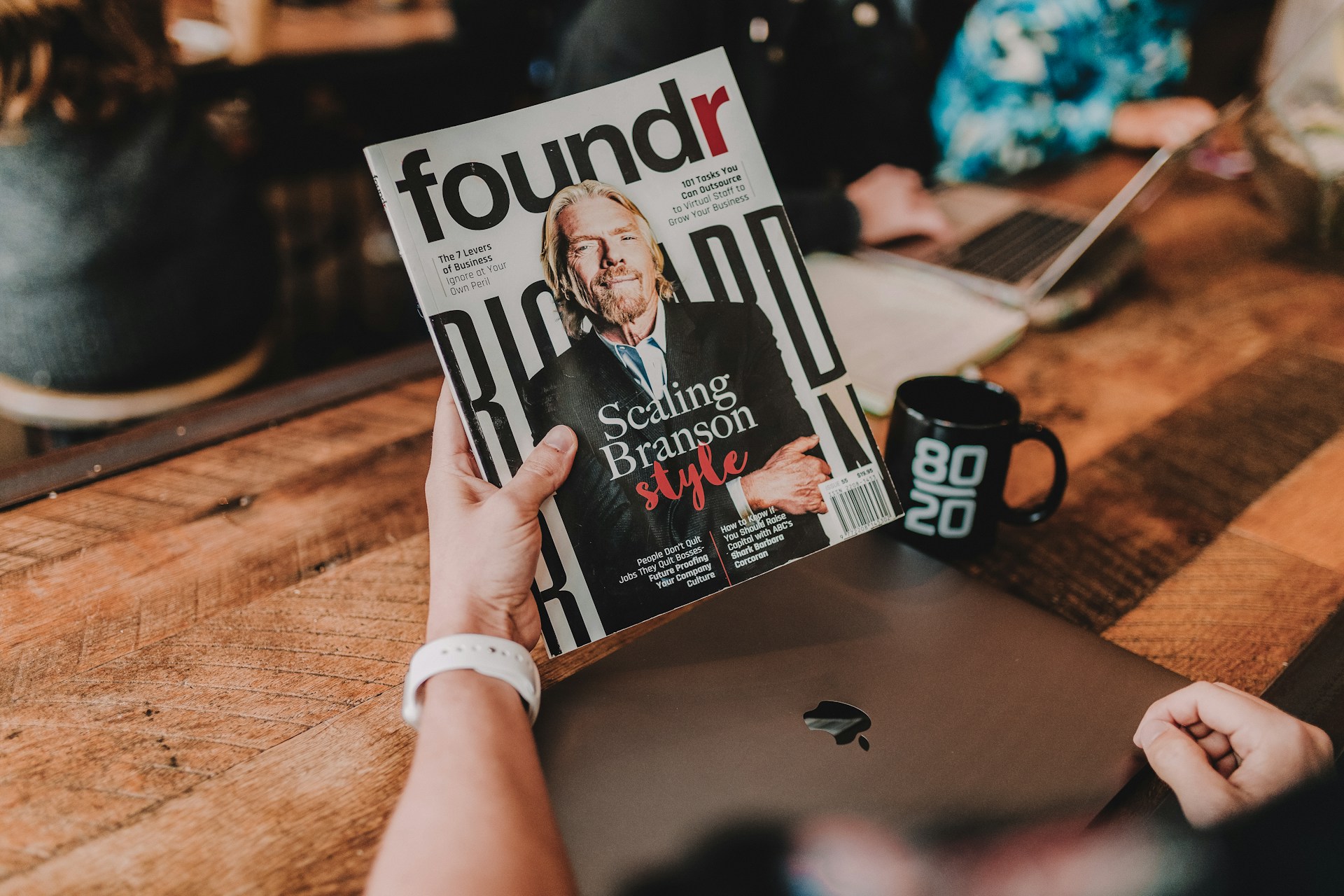Mindful Productivity: Practice Presence for Focus, Creativity & Clarity

Letting go of distractions & worries can help us to be more productive
We always seem to have our minds full without being mindful.
Our days are filled with meetings, emails, assignments, and deadlines. Rarely do we truly live in the present. There’s always something to be done, something to respond to; and we end up not having much time to simply be, and think, and feel.
Being in the moment might be scary. (”You mean I should stop worrying about tomorrow?!”)
But when it comes to finding focus, creativity, and productivity, mindfulness might surprise you with its powerful benefits.
Instead of keeping your mind full all the time, discover how being more mindful could change your life—beginning at the workplace, with mindful productivity.

What is Mindfulness?
Mindfulness is difficult to explain or define. So elusive is its essence that some mindfulness exercises are built on simply reflecting on mindfulness itself!
At its core, however, being mindful is being conscious of the present, and aware of your own thoughts and emotions. You’re not wistfully gazing into the past, or anxiously peering into the future. Your mind, body, and soul are centered in the “now”. You notice your breathing, thoughts, and actions almost as if you’re from the outside looking in.
“Mindfulness is the basic human ability to be fully present, aware of where we are and what we’re doing, and not overly reactive or overwhelmed by what’s going on around us.”
Mindful
Benefits of mindfulness
Meditative activities, like the mindfulness exercises listed below, tend to increase alpha waves in your brain, causing you to have a more relaxed brain—which in turn encourages creativity, focus, and clarity.
Another small study reveals that mindfulness helps develop our prefrontal cortex—the part of the brain responsible for conscious thought, self-awareness, intuition, and focus. As the prefrontal cortex becomes denser, you improve your ability to focus on tasks, memorize things, make better decisions, solve problems creatively, and relieve stress.
Speaking directly about the connection between creativity and mindfulness, experts have discovered that being mindful facilitates the first three stages of the creative process:
- Preparation: With mindfulness comes enhanced divergent thinking, giving you more ideas to start with.
- Incubation: Mindfulness helps your mind relax and place a problem onto the “back burner”, allowing your subconscious to sift through ideas and find that perfect one.
- Illumination: As you become more self-aware through mindfulness practices, you notice your own thoughts, strengthening your mind’s connection to the subconscious and making Eureka moments come easier and quicker.
Being mindful is being conscious of the present, and aware of your own thoughts and emotions.
You’re not wistfully gazing into the past, or anxiously peering into the future. Your mind, body, and soul are centered in the “now”.
How does mindfulness help improve performance and productivity?
When you’re mindfully productive, you’re focusing on the quality of work over the quantity of output, all the while being consciously present in what you’re doing.
You know exactly when you’re starting to feel anxious or stressed out. Your actions are intentional, your tasks purposeful. As a consequence, your productivity is dramatically improved.
It may be difficult to be constantly mindful while chasing deadlines. But instead of gritting your teeth and cranking out the work under stress and pressure, you can choose to place the process over the outcome.
You learn to submit your mind and skills fully to the task at hand without focusing on what the results of your work will be (and how they’ll affect you).
This approach lends itself directly to productivity because you remain focused on the work before you, instead of worrying over the intangible future.

When you’re mindfully productive, you’re focusing on the quality of work over the quantity of output, all the while being consciously present in what you’re doing.
How can you practice mindfulness? Let me count the ways.
Before we talk specifically about mindful productivity, let’s review some basic techniques commonly used to achieve a mindful state. The following list isn’t exhaustive, of course. But if you’re wondering what you could do to build more mindful habits into your daily life, here are some ideas.
- Mindful breathing: Breathing is so instinctive, so crucial to life…and so often overlooked in our rushed lifestyles. When you take a few moments to notice the breaths you take, you release your mind from everything else to focus solely on what your body feels like as life-giving oxygen enters your lungs, and stale air is released. Meditative breathing frees your body from the constant fight-or-flight response we bring to stressful situations, allowing for creativity, relaxed focus, and improved productivity over the long run.
- Sensory exercises: How often are you actually aware of what you’re sensing at any given moment? Every so often, take a moment to note what you’re feeling through your five senses. What do you smell? What are you looking at, and how does it affect your thoughts? Is the keyboard under your fingers warm? Being mindful of the information your body receives from the environment around you can channel your thoughts into a more restful state.
- Gratitude list: Thankfulness centers your mind on joy, peace, and gratitude. These positive emotions in turn relax your mind, taking your focus off the future or the past (both of which you have no control over anyways), and grounding you in the present. Spend a few minutes each day listing ten or fifteen things you’re thankful for. Bonus points? Start a gratitude journal, and make it a habit to write in it every day. Not only does writing your blessings down make your thankfulness more concrete, this also allows you to look back on the good things in life when you feel down.
- Yoga: Mindfulness stems from letting go of the stresses in your mind and releasing tension in your body, allowing your muscles to relax and breathe, and being aware of your movement in a meditative manner. Here’s a quick video on some yoga moves you could do during your break sessions. Better yet, do a yoga session outside in nature: the outdoors can boost your mood and relieve stress.
Other meditative practices that boost daily mindfulness include the “body scan”, journaling, visualization, and guided meditation. But mindfulness really is more than just a number of activities you complete. It’s a way of living. As Vox says, it’s more important to build rituals than routines, where your actions and thoughts are intentional and purposeful, instead of habitual and routine.

Ways to practice mindfulness principles at work
Being mindful at work can sound like a contradiction—but it doesn’t have to be one. Most employers wouldn’t appreciate you spending work hours doing yoga poses and deep breathing, however. So how could you be mindful at work while actually being productive?
Stop multitasking, and practice mono-tasking instead: Our ability to pay attention is precious, powerful, and profoundly limited. Here’s where multitasking becomes a huge culprit, though. You might think you’re getting a lot done when you multitask, but you never really get to the heart of what you’re doing. You’re never really focused.
In his studies, Stanford University researcher Clifford Nass found that people who multitask heavily do badly at sorting out relevant information. He also discovered that, when we attempt to perform multiple tasks simultaneously, what we do tends to take twice as long to finish, and we may end up making more mistakes along the way.
So try monotasking instead—that is doing one thing at a time—and see how it would focus your mind, calm your spirit, and spark your creativity.
Watch your thoughts and emotions at work: When we’re deep into a project, we can get so engrossed we begin to obsess over small, non-consequential details. When that happens, it’s easy to enter into negative and unproductive mental states, over even getting burnt out.
Being more aware of our thoughts and emotions isn’t about judging our emotional and mental states and labeling them “good” or “bad”. Instead, you’re simply being aware of those states. Each time your mind wanders, acknowledge the thoughts and emotions and bring your attention back to the task at hand. Pause every now and then to take a break and reorient your mind.
Get in the flow: There’s a mode of working where your mind is most productive, yet remains calm and peaceful. Called “being in the flow”, it’s when what you do is challenging enough to keep you engaged and learning, but not so hard that it’s demotivating. When you’re “in flow,” time passes without you noticing—you’re so focused that distractions simply don’t register in your brain. It’s a powerful tool for maximizing productivity, gaining clarity, and building focus at work.
“Define your goal, cut out distractions, take a deep breath, and keep your mind fully attentive so you can stay relaxed and focused.”
Ness Labs
Create a distraction-free environment to work in: Preparation is crucial to a smooth, effective workday. Pay attention to your work environment. Make sure you have everything you need for the project at hand before you sit down at work. Deal with the stressful thoughts and distractions you bring with you before you begin working; and when you actually start, find ways to focus by reducing the distractions with website-blocking apps like Freedom, or monotasking.
Use the Pomodoro technique (or others) to schedule work sessions and breaks: You’re not a robot, so don’t treat yourself like one! Take breaks to refresh your mind and recover from the stresses inherent in your work. Mindful rest at regular intervals, such as taking a walk outdoors for both fresh air and exercise or spending a few minutes doing nothing, is crucial to peak performance at work.
Digital devices can stand in our way of reaching a calm consciousness of the present moment.
Tools to aid you on your mindfulness journey
It can be difficult to build a new habit, a new mindset, or a new approach to the things you do. Along your journey to a more focused, creative, and relaxed mind—to a life that’s less “mind full” and more “mindful”, tools can be invaluable to keep you on track.
Apps for mindfulness might sound rather oxymoronic. Don’t phones inherently inhibit “true mindfulness”? Doesn’t mindfulness or creativity exist apart from digital screens and the interconnectivity of the Internet?
While digital devices can stand in our way of reaching a calm consciousness of the present moment, it’s impossible to completely do away with things that distract us.
Meditation apps like Headspace and Calm can help guide your mind to peaceful, renewing mindfulness. Journaling apps like Stoic allow you to jot down worrisome, distracting thoughts, freeing your mind to focus on the work at hand. Apps that help reset your mindset include Personal Zen and Omvana. Time trackers like Freedom are crucial for setting uninterrupted blocks of time, allowing you to enjoy mindful, focused work sessions, take much-needed breaks to refresh your mind and spirit, and avoid burnout. Freedom also offers focus music that relaxes your brain and primes your mind for meditative moments.

Letting go of a full mind and embracing mindfulness
It can be scary to slow down and watch the world go by. We often feel we must be in the mix of things, constantly doing, always on the go. Instead, being present and conscious of ourselves, our work, and our surroundings can actually help us become focused, productive, and creative—much more so, that is, than if we’d never taken the time to think and feel.
Explore ways to be more mindful at work. Let go of the distractions and worries that crowd into your thoughts. Simply close your eyes right now, and take a deep breath.


